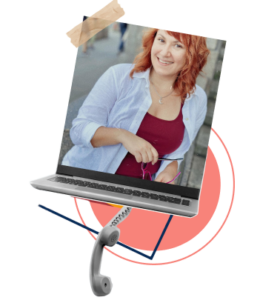Outreach Best Practices for B2B Lead Generation
Key Points
Define Your Market Clearly. Nail down your ICP (ideal customer profile) and TAM (total addressable market). Without this clarity, your outreach wastes time on the wrong prospects.
Personalized Outreach Wins. Go beyond templates—reference roles, companies, or recent activities. In B2B lead generation, use frameworks like AIDA or PAS to stay persuasive without sounding scripted.
Cadence + Multi-Channel = Conversions. Consistent touchpoints across email, LinkedIn, and phone drive replies. Layer outreach (email → LinkedIn → call) while adding value at each step.
Lead generation and outreach are often confused, but they’re distinct concepts.
Lead gen is all about bringing potential customers into your orbit.
Outreach is what happens after: you actively reach out to those people, usually through email, phone, or LinkedIn, to start real conversations.
Done right, both lead gen and outreach feed your pipeline with potential buyers who are more likely to convert, and following proven outreach best practices is what makes the difference.
Know Your ICP and TAM Cold

You can’t hit a target you haven’t defined. An ICP outlines the type of company that’s a perfect fit for your solution—industry, size, pain points, budget, tech stack, and buying triggers.
TAM (Total Addressable Market) is the big picture.
It shows the number of ICP-fit companies that actually exist. Knowing this helps your team focus on the right market segments, rather than spreading efforts too thin.
Getting your ICP and TAM nailed down also prevents the classic tug-of-war between sales and marketing.
Build a High-Quality Lead List
A good lead list starts with research.
Use platforms like LinkedIn, Apollo, and ZoomInfo—or tap into the expertise of the SalesAR team to find companies and contacts that actually fit your ICP.
You can opt for manual processing (slower, but more precise) or automate with scrapers and enrichment tools.
Enrich your data with job titles, company size, tech stack, funding rounds, and hiring trends.
The more relevant your data is, the more effective your outreach will be.
Craft Outreach That Converts
Personalization wins. Not just “Hi [First Name]” but real references to their role, company, or recent activity.
Templates are fine for structure, but your message needs to feel human.
Use proven frameworks to guide your writing. PAS, AIDA, or 4Ps are staples of outreach best practices, helping you stay focused, persuasive, and clear about your ask. Just don’t sound like a script.
Nail the Channel Strategy
Start with cold email. Deliverability is half the game: warm up your domain, use clean lists, and avoid spammy language.
Then, focus on sequencing—space your emails out, vary the messaging, and always add value.
LinkedIn is more about connection than conversion, at first.
Engage with posts, send a thoughtful note, and build the relationship before you drop a meeting request.
Best results come from combining channels. Email, LinkedIn, and phone create more touchpoints, more familiarity, and more opportunities to get a response.
Use the Right Outreach Cadence
Your outreach shouldn’t be one-and-done. A solid cadence keeps you top of mind without crossing the line into spam.
✅Think of it like this: Day 1 email → Day 3 LinkedIn touch → Day 5 follow-up email → Day 7 call.
Layer the outreach. Give space to breathe.
Persistence is key, but according to outreach best practices, you should avoid becoming a nuisance by spacing out your touches and adding real value each time.
If someone hasn’t replied after 6–8 touchpoints across channels, it’s probably time to back off or try a new angle.
Most replies come after the second or third touch. Just make sure each message feels fresh, not like a copy-paste nudge.
You’re reaching out to people, not inboxes.
Qualify Leads the Right Way
Start with the basics: MQLs (Marketing Qualified Leads) are warm prospects who’ve shown interest—maybe they downloaded something or replied to an email. SQLs (Sales Qualified Leads) go further.
They’re vetted, interested, and meet your ICP criteria.
Use frameworks like BANT (Budget, Authority, Need, Timeline), CHAMP (Challenges, Authority, Money, Prioritization), or SPIN (Situation, Problem, Implication, Need-Payoff) to ask thoughtful questions early.
The goal? No fluff. Just solid leads that sales can actually close.
Measure What Matters
Outreach without metrics is like throwing darts blindfolded.
Track the basics first: the open rate shows if your subject line is working, the reply rate tells you if your message hits, the meeting rate shows who’s ready to talk, and the show rate reveals how well you’re qualifying.
Track how many leads convert into real opportunities—one of the core metrics in modern outreach best practices to ensure you’re chasing results, not vanity numbers.
Compare the cost of tools, data, and SDR time to pipeline generated.
It’ll show you what’s working, what’s stalling, and where to double down.
Conclusion
B2B lead generation and outreach aren’t about chasing volume.
They’re about targeting the right people with the right message at the right time.
A great strategy blends relevance, timing, and persistence across channels.
You don’t need 10,000 leads to fill your pipeline.
You need the right ones, qualified and ready for a real conversation.
Focus on quality, refine your messaging, and stick to the outreach best practices that consistently deliver real discussions and real pipeline.



















